Rare and in constant need of cosseting: that’s the traditional image of wild orchids in Britain. We’ve tended to see them as fragile plants on the edge of existence, unable to survive without our intervention.
For some species this may well be true, but many of the June orchids we’ve chosen for this guide are thriving – sometimes in unexpected habitats. Sweeps of common spotted orchids crowd motorway verges. Exotic-looking bee orchids behave like weeds, colonising bare ground beside roads and in quarries. Southern marsh orchids flourish in the damp hollows near gravel pits.
Even the highly local lizard orchid isn’t averse to slumming it. One colony I know braves vehicle fumes by lurking just behind the crash barriers within 1m of a busy dual carriageway.
Some of the species illustrated here are a little fussier, though, and take dedication to find. Man and fly orchids both favour limy soils, for example, while the lesser twayblade needs the damp peat of heather moors.
One thing is certain: whether we seek them or stumble upon them, orchids never lose the ability to surprise.
All illustrations by Christina Hart Davis
How to identify orchids
Burnt orchid (Orchis ustulata), above
Short: up to 20cm. Flowers maroon, then pale pink as they open. Local on short chalk and limestone grassland.
Common spotted orchid (Dactylorhiza fuchsii)
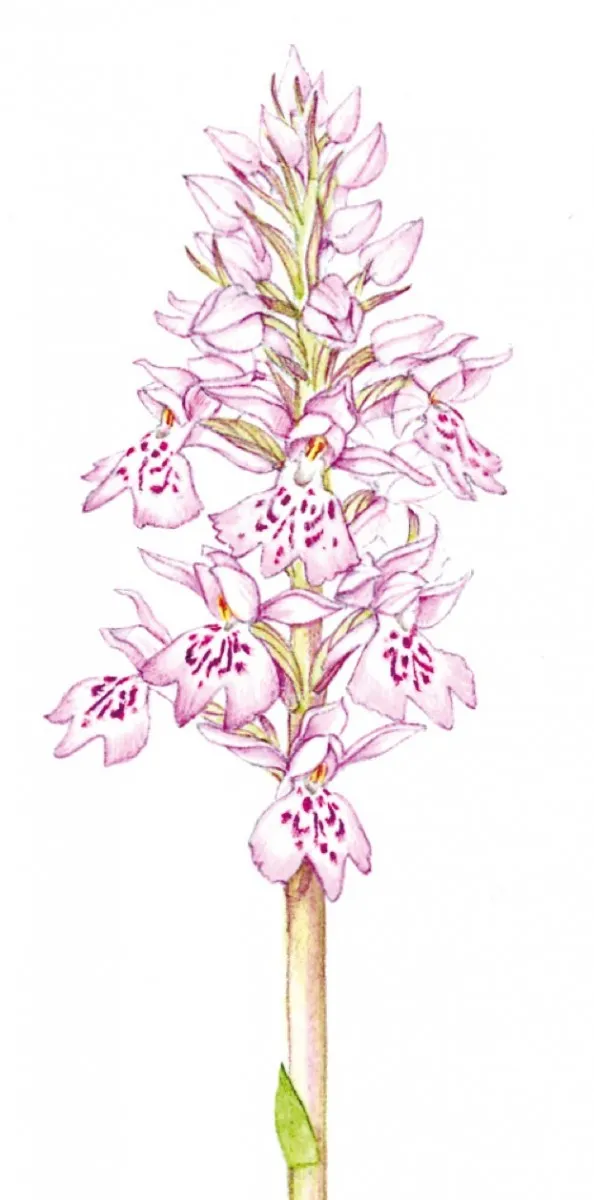
Flowers deep pink to white, with varying spots and streaks; leaves spotted. Many open habitats.
Heath spotted orchid (Dactylorhiza maculata)

Flowers variable, but often paler pink than common spotted orchid; leaves spotted. Damp, acid or neutral soils.
Southern marsh orchid (Dactylorhiza praetermissa)
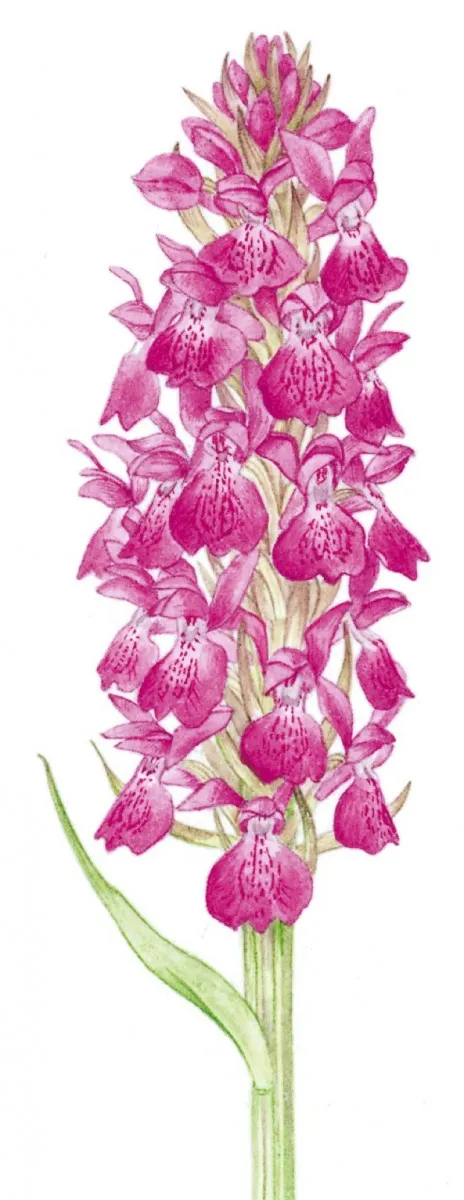
Up to 70cm tall, with rich pink-purple flowers; leaves plain. Local in south in marshes and damp grassland.
Lesser butterfly orchid (Platanthera bifolia)
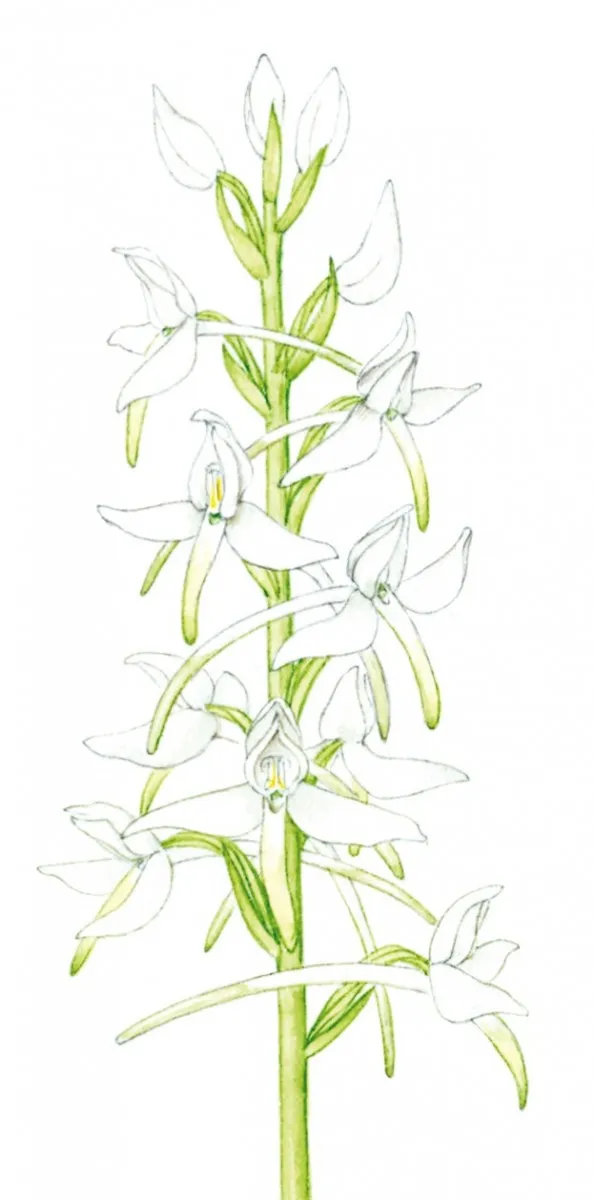
Green-white flowers with long spurs. Local in north and west on upland heaths and unimproved grassland.
Lizard orchid (Himantoglossum hircinum)
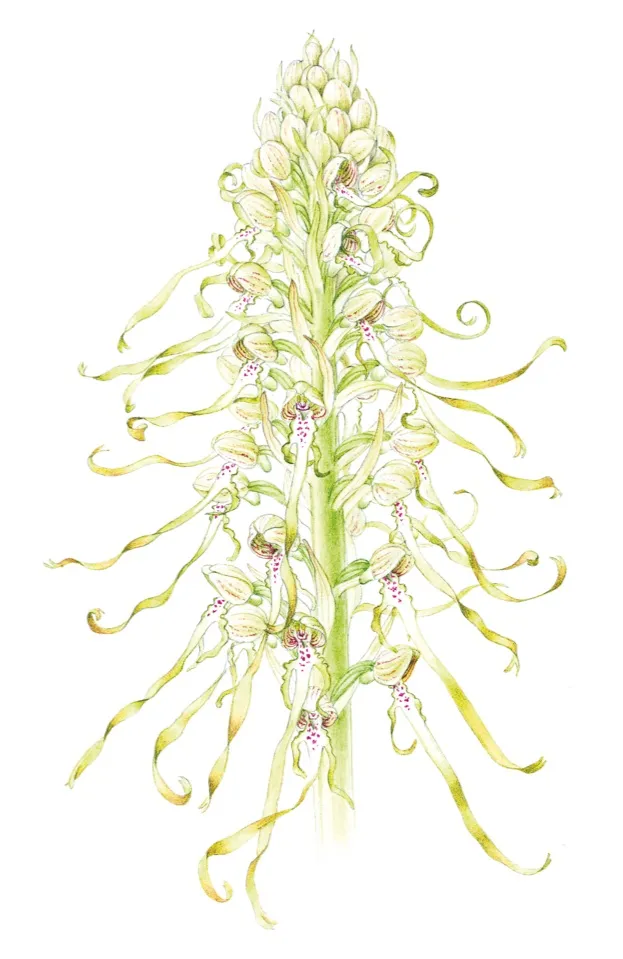
Flowers have a ‘lizard’ tail and goaty smell. Rare, mostly in south, on chalk and limestone grassland and dunes.
Lesser twayblade orchid (Listera cordata)
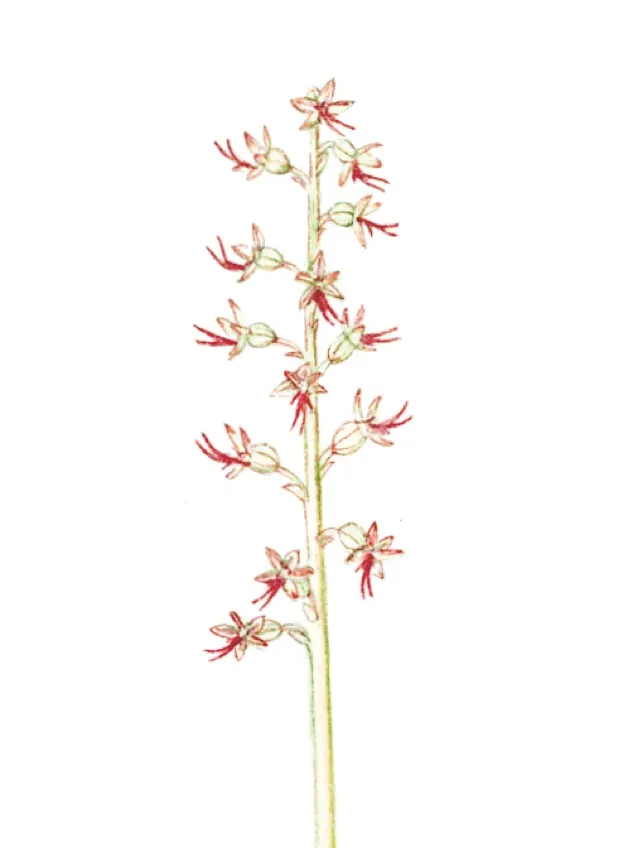
Small; often hidden by heather. Red-brown flowers; single pair of leaves. Local on wet, mossy heaths and bogs.
Man orchid (Orchis anthropophora)
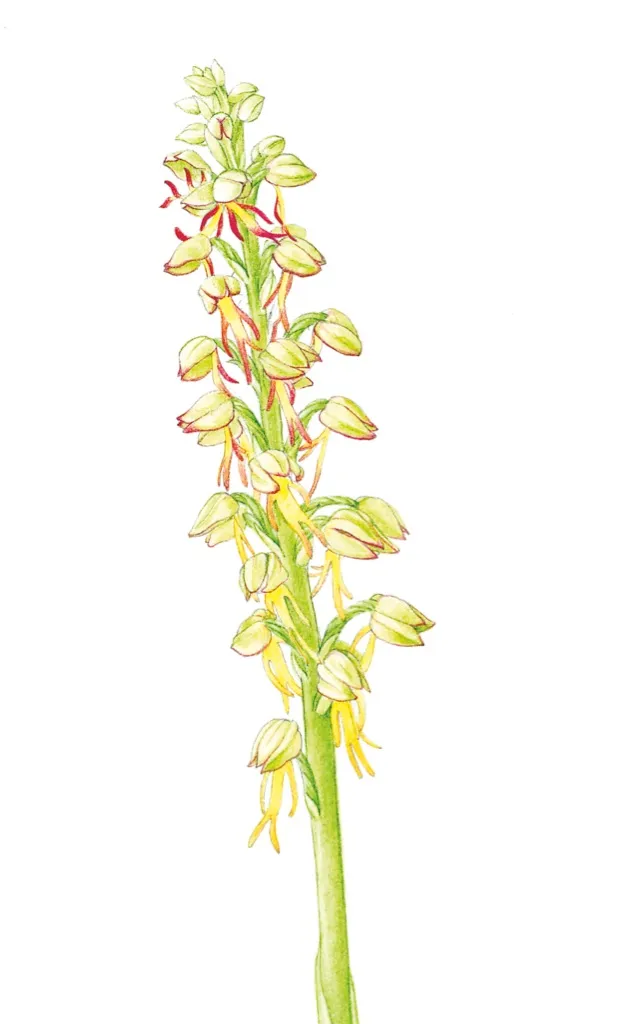
Human-like flower has lobed yellow or red lips. Local on short grassland and downs, mostly in south-east England.
Fly orchid (Ophrys insectifera)
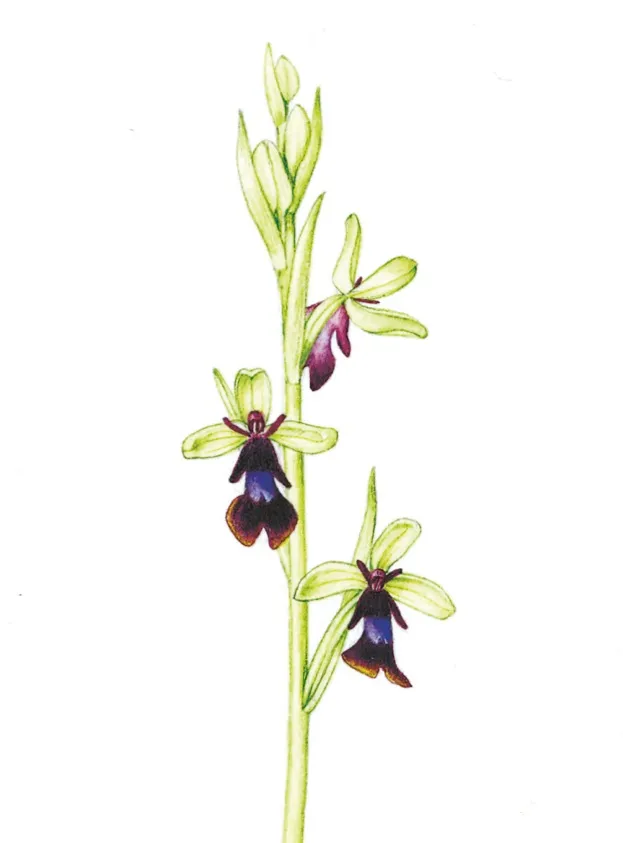
Unmistakable. Local, mainly in south. Scrubby grassland and woods on limy soils; also in chalkpits and quarries.
Bee orchid (Ophrys apifera)
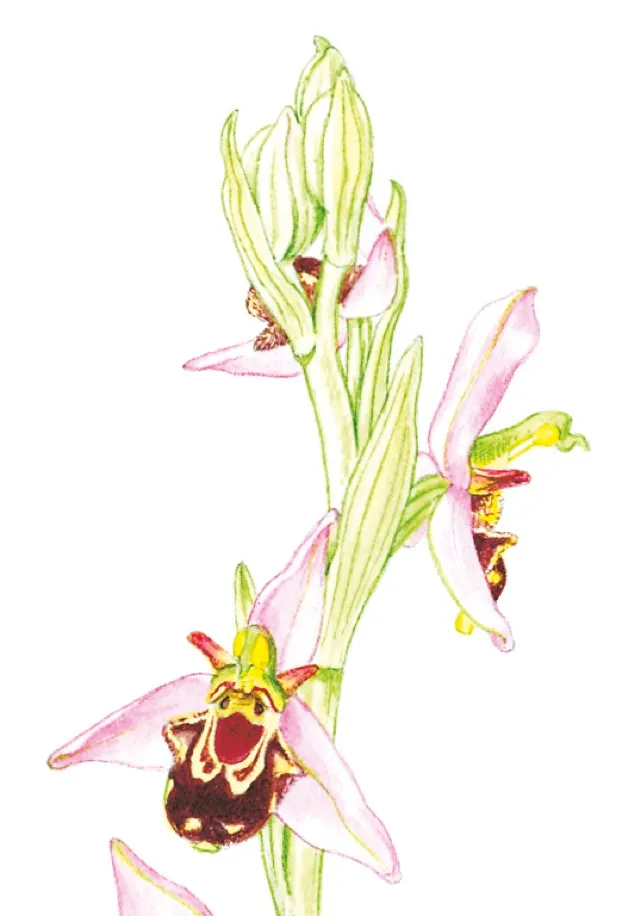
Unmistakable. Short turf in limestone areas; also quarries and verges. Rare or absent in north and west.
